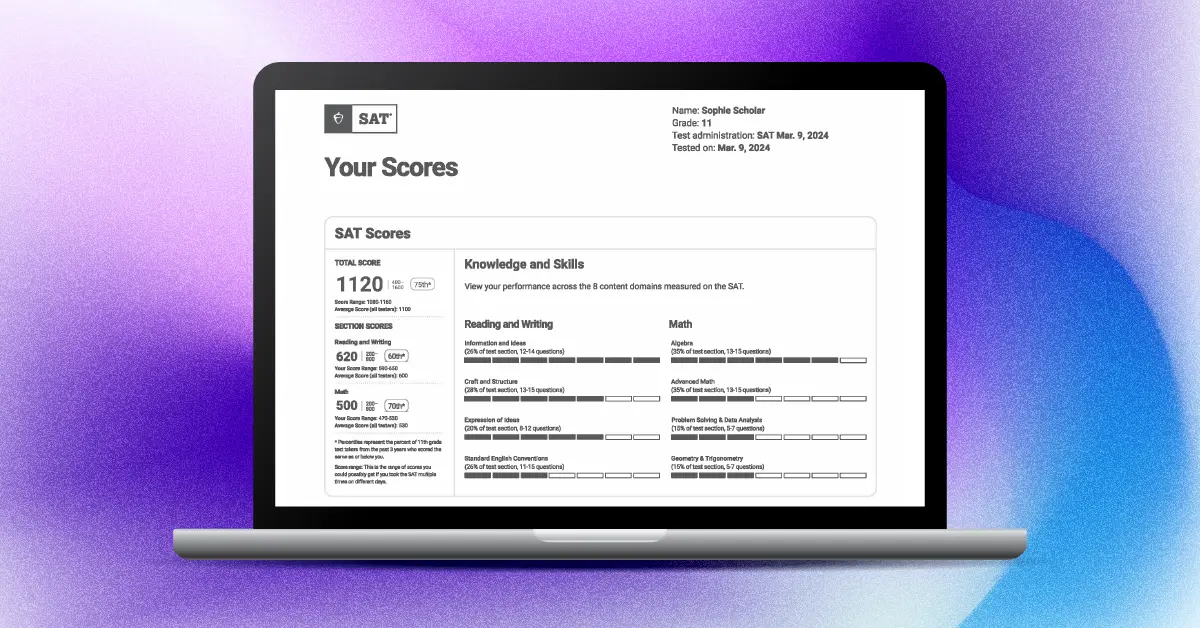If controversy were a swimming pool, the College Board just did a cannonball into the deep end with their rollout of the Environmental Context Dashboard, aka the “adversity score.”
The College Board — a non-profit organization that designs, oversees, and administers the SAT® — will begin assigning each test-taking student a 0-to-100 score, using a variety of factors including crime rates, poverty levels, unemployment, and the percentage of single-parent families in a student’s high school and neighborhood.
Any adversity score over 50 indicates a disadvantage — revealing a student who has faced more societal hurdles than other test takers. The higher the score climbs above 50, the more disadvantaged the student, according to the College Board.
Conversely, a score below 50 reveals a student who has seen more privilege than other adolescents. And the deeper that score dives below 50, the greater his or her apparent socioeconomic and environmental edge.
The adversity score does not affect a student’s actual SAT score, but is reported to college admissions offices as part of a more comprehensive data package for each of the approximately 2 million students who annually take the SAT.
As a beta test, 50 colleges used the adversity score as part of their admission process in 2018. 150 institutions will participate in a pilot program, receiving the scores this fall. And a nationwide rollout is set to occur in 2020.
The adversity score is a relatively simple concept that has exploded into a remarkably complex debate about fairness, merit, equal opportunity, privacy, and race, as they relate to college admission.
Like a fickle crowd, the response from the educational community has been divided — drawing tepid applause from some, lusty boos from others, and disinterested shrugs from a remaining few who gave up on the testing game a long time ago.
When asked about the adversity score, Jeremiah Quinlan, the dean of undergraduate admissions at Yale, told the New York Times, “It just helps contextualize the SAT score for us. When you’re able to see a student’s SAT score and then compare it to the SAT scores of the other students at the school, that can be powerful to identify a truly transcendent student.”
Anthony Abraham Jack, a Harvard professor and the author of The Privileged Poor: How Elite Colleges are Failing Disadvantaged Students, agrees in principle. He tells The Atlantic: “It is giving us a look at how poverty and inequality directly affect students’ college destinations, as it relates to [test scores].” Jack points out, “When students sit down [to take] the SAT, that doesn’t mean everybody’s at the same starting line.”
However, vociferously differing opinions have lit up social media, discussion boards, and op-ed columns like fireflies across a sweltering night sky.
Hafeez Lakhani, a college admissions coach in New York, tells the New York Times, “Anxiety’s ratcheting up. People are worried about never being good enough.” Lakhani speaks of receiving emails from parents who wonder if their children’s SAT prep “would be completely negated just because we happen to have some means.”
Lakhani’s position is that the adversity score is unnecessary. He believes colleges are “already doing a good job of considering adversity, as indicated by rising numbers of first-generation and low-income students, especially at elite colleges.”
In an article for Forbes, Michael T. Nietzel, president emeritus of Missouri State University, writes: “We need fair, transparent, college processes that result in the admission of diverse, capable students prepared to study hard and finish college. But do we really need adversity scores to do so? No.”
Regardless of the often heated arguments and debate, the College Board is standing by its program, believing the Environmental Context Dashboard (they reject the “adversity score” moniker) is a step in the right direction to address the disparities of wealth often reflected in college admissions testing.
“Merit is all about resourcefulness,” says David Coleman, president and CEO of the College Board. “This is about finding young people who do a great deal with what they’ve been given. It helps colleges see students who may not have scored as high, but when you look at the environment that they have emerged from, it is amazing.”
If you’re taking the SAT this year or next, the what-does-this-mean-for-me question is an understandable one, and the answer depends on where you land on the index.
If you come from an upper middle class or affluent family, the adversity score does not appear to have a direct benefit for you, but that doesn’t mean it is a detriment. Hitting your target SAT score should still be your focus as you pursue admission to your first choice college or university.
For other test takers, if your social and economic environment places you on the disadvantaged side of the scale, colleges and universities have a new tool to see your achievements in a more complete way. Your SAT test scores are still paramount, but your story will be told with a few extra pages for context.
The bottom line for students taking the SAT is this: Like every patron standing in line at a deli counter, every runner crowded at the start of a marathon, and every tween girl getting her first phone — you’re going to be given a number.
This number — your adversity score — will not be divulged to you, but only to colleges and universities looking at your SAT results.
It is a number not based upon your academic successes or failures, but rather your community’s advantages or limitations. It is not a score you have to earn; it is imputed. It’s more about what you’ve overcome outside of the classroom than what you’ve achieved in it.
How do you feel about that?
(Remember: The adversity score doesn’t replace or diminish your SAT score, it simply accompanies it, giving college admissions offices extra insight into your environment.)
Visit UWorld for more information about the SAT or ACT. We can’t change your adversity score, but we can help you hit your dream SAT score with our affordable, personalized, high stakes-exam prep!




